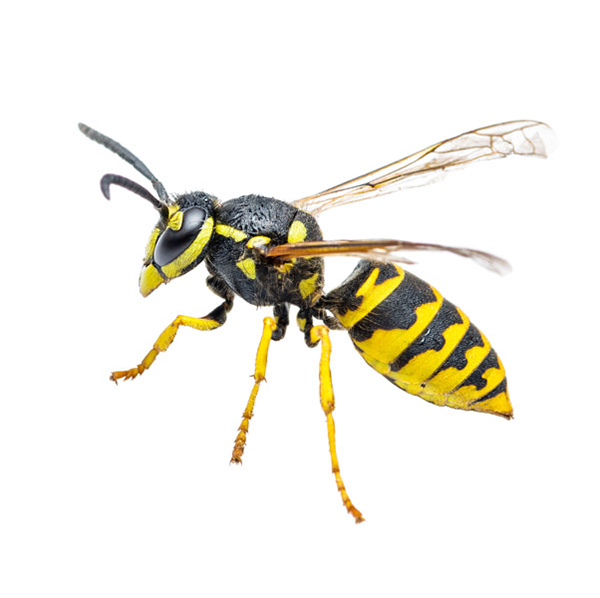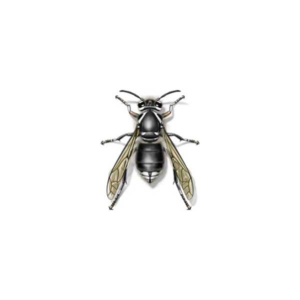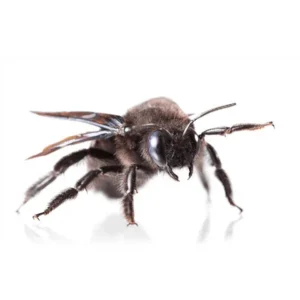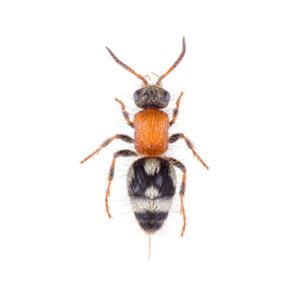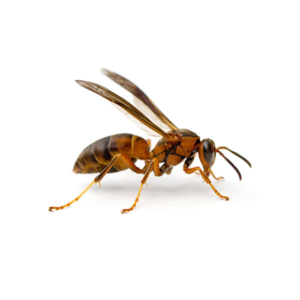Yellowjacket Wasp Identification
What Do Yellowjacket Wasps Look Like?
Yellowjacket wasps are typically black with yellow markings, including bands around their abdomen and on their face. They have a sleek, slender body, about half an inch long. Their wings are translucent and their bodies are smooth.
Signs of a Yellowjacket Wasp Infestation
Found throughout the United States, yellowjackets are the most infamous wasps. These beneficial wasps live in colonies with thousands of individuals and would be a lesser threat to humans were it not for their opportunistic behavior of nesting in structural voids, attics, and cavities associated with landscaping features. Adult yellowjackets feed mainly on fruit juices and other sweet liquid materials, whereas their larvae are fed bits of soft-bodied insects like caterpillars and flies. These wasps are known to become more aggressive in the late fall and early fall months.
Habitat, Diet, Life Cycle & Stings
Where Do Yellowjacket Wasps Live?
Yellowjackets can be divided into ground nesters, which frequently use old rodent burrows and aerial nesters. Above-ground nests are found among the leafy branches of trees and shrubs and also on structures. Occasionally, the nest may be constructed on the side of a building, in wall voids, under eaves, crawlspaces, and attics. The entrance of the nest is normally a hole located at the bottom. These aerial nesters don’t become scavengers in the fall and they are extremely defensive when their nests are disturbed. Locating the nest, through observing flight patterns, is essential to eliminate them.
Diet of a Yellowjacket Wasps
Yellowjacket wasps are omnivores, feeding on a variety of foods. Their diet includes insects, particularly other small insects, and larvae, which they hunt and scavenge for. Additionally, yellowjackets are attracted to sugary substances like nectar, fruits, and sweet drinks, making them frequent visitors to picnics and outdoor gatherings. They scavenge proteins from sources such as meats and carrion. This diverse diet allows them to adapt to various environments and food sources, contributing to their ecological success.
Life Cycle of a Yellowjacket Wasps
The life cycle of a yellowjacket begins with a fertilized queen emerging from hibernation in spring. She builds a small nest and lays eggs, which hatch into larvae fed by the queen and later by worker wasps. The larvae pupate and emerge as sterile female workers, who expand the nest and care for new larvae. In late summer, the queen lays eggs that develop into fertile males and new queens. After mating, the males die, and the old queen and workers perish as winter approaches. The newly mated queens find shelter to hibernate, restarting the cycle in spring.
Do Yellowjacket Wasps Sting?
Yellowjackets are slow to sting unless their nest is threatened. However, yellowjacket stings pose a more serious threat to humans than bees, because a yellowjacket’s stinger is not barbed like a honey bee, allowing it to sting repeatedly. Some individuals are more sensitive than others due to allergic reactions and should seek medical attention when stung. Sometimes yellowjackets living in wall voids chew their way through the drywall and enter the structure’s living space. Naturally, the presence of large numbers of wasps flying around the room can be alarming to homeowners. If you spot a yellowjacket nest, always contact our professional wasp removal exterminator for help.
Are Yellowjacket Wasps Dangerous?
Yellowjacket wasps can threaten humans due to their aggressive nature when defending their nests. They can sting repeatedly, injecting venom that can cause pain, swelling, and in some cases, allergic reactions ranging from mild to severe. They are beneficial as predators of pests like insects, but their presence near human habitation can lead to conflicts. It’s essential to exercise caution and seek out professional wasp & hornet control.
Yellowjacket Wasp Prevention Tips
Prevent yellowjacket wasp infestations by keeping outdoor food and drinks covered, especially during picnics or outdoor gatherings. Regularly empty and clean garbage cans to remove attractants. Seal any openings in walls, roofs, or windows to prevent nest buildings and trim vegetation near buildings to discourage nest establishment. If you encounter a nest, avoid disturbing it and contact your local Bug Out team.
Contact our professional wasp and bee pest control today!
Need help with Yellowjackets control?
FAQs
How Aggressive Are Yellow Jacket Wasps?
Yellowjacket wasps are known for their aggressive behavior, especially when defending their nests. They can sting repeatedly and release alarm pheromones to signal danger to others. Their aggression can escalate quickly in response to perceived threats, making them potentially dangerous, particularly in large numbers or near human activity.
What’s the Difference Between a Wasp and a Yellow Jacket Wasp?
The term “wasp” is a broad category that includes various species, while “yellowjacket” refers specifically to certain wasp species in the genus Vespula and Dolichovespula. Yellowjackets are typically characterized by their yellow and black markings and are known for their aggressive behavior.
How Poisonous is a Yellow Jacket Wasp?
Yellowjacket wasps inject venom when they sting, which can cause pain, swelling, and allergic reactions in humans. Their venom is not considered highly toxic to most people, multiple stings or allergic reactions can lead to severe health complications for sensitive individuals.

